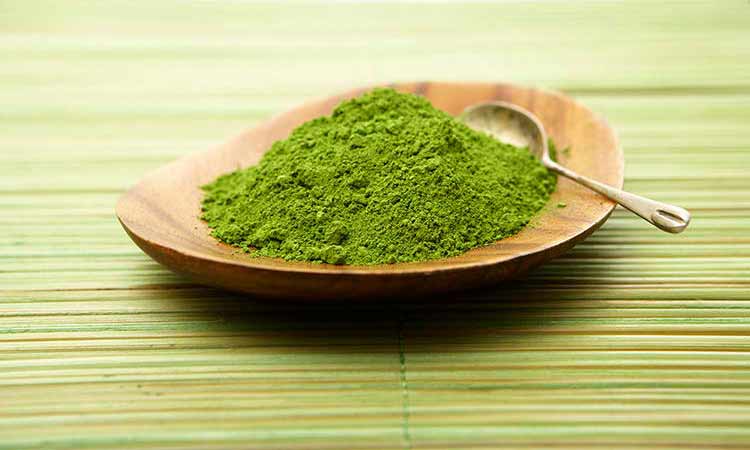MATCHA
Japanese Green Tea- Matcha
Matcha is the finest quality Green Tea from Japan. It is made from stone-ground and powdered green tea leaves and contains very high levels of antioxidants. Matcha literally means “Powdered Tea” and yet it’s a very special type of green tea grown only in Japan. It is a highly-prized, jewel-green powder that is whisked in a bowl with hot water to make a frothy beverage of the same name, or added to other recipes such as lattes, smoothies, savoury sauces, or pastries.
Preparation of matcha is the focus of the Japanese tea ceremony, and has a long association with Zen. Matcha is the only form of tea in which the whole leaf is consumed. Because it is made only from top-quality young leaves that are grown, harvested, and prepared with great care, it has a much more beneficial health profile than other green teas. Its flavour and texture are unlike other teas; matcha is a beautiful and richly-flavoured beverage.
High levels of chlorophyll and amino acids give Matcha its unique, wonderful flavour. Unlike many teas which require sweeteners, Matcha has its own sweetness. Matcha made in the traditional Japanese style, whisked with water, is a full-bodied green tea. Like dark chocolate or red wine, Matcha has a rich flavour that you appreciate more over time. When added as an ingredient, matcha adds its characteristic lovely green colour and a subtle flavour.
Matcha is renowned for its plethora of health benefits. It is rich in nutrients, antioxidants, fibre and chlorophyll. It is an ideal drink for diabetics and those on low-sugar or low–carb diets because it is sugar free. Matcha is also known to be a potent cancer preventer. Read more: Health Benefits of Matcha
About three weeks prior to tea harvest, the farmers cover the tea plants with shade cloth made of bamboo mats or tarp, gradually reducing the level of sunlight that gets to the plants. This increases the chlorophyll content and turns the leaves dark green.
After the harvest, the tea leaves are steamed and air dried. Next, the leaves are sorted for grade, and then de-stemmed and de-veined. Now the leaves are called Tencha. Once the Tencha is ground into powder, it is called Matcha.
Tea-grade Matcha is ground on a stone mill to achieve a fine powder texture, unlike industrial grade Matcha which is ground by machines. The stone grinding produces a specially shaped powder molecule which impacts the taste and mouth feel of the Matcha.






